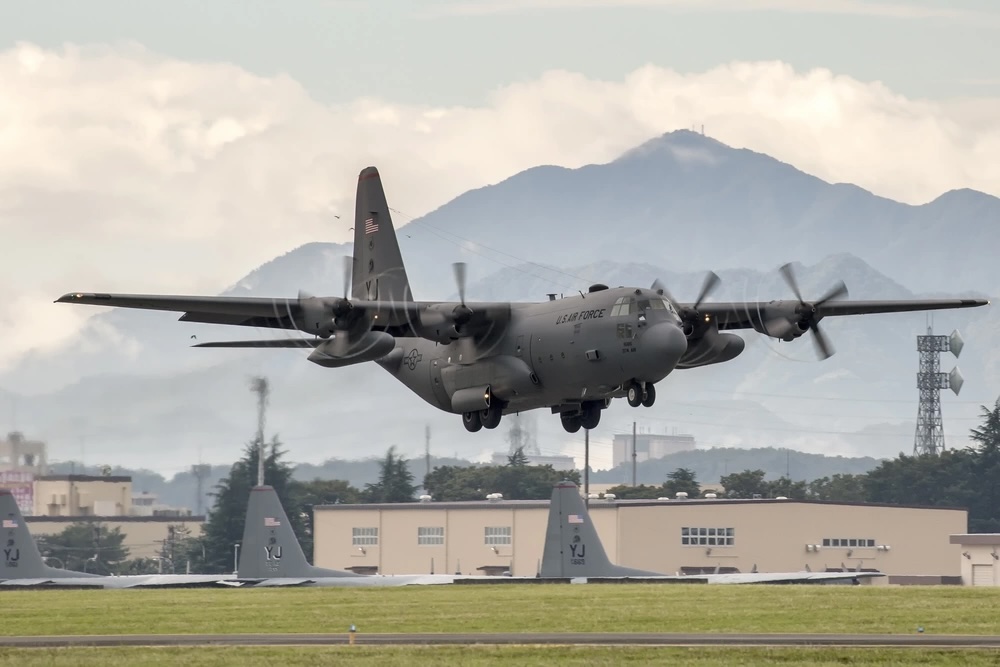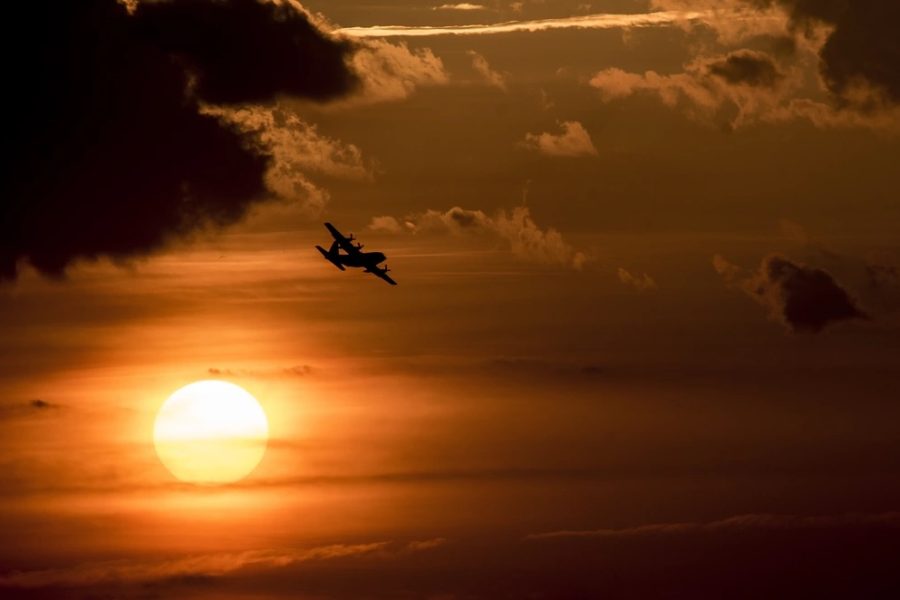An era began 70 years ago on Aug. 23 when Lockheed test pilots Stan Beltz and Roy Wimmer, along with flight engineers Jack Real and Dick Stanton, took the new YC-130 prototype on its maiden voyage from Burbank, Calif., to Edwards Air Force Base about 50 miles east. They took off after just 855 feet of runway, “an astoundingly short distance considering most aircraft of that size required 5,000 feet,” Lockheed Martin later wrote.
It was a sign of things to come: in the seven decades since that flight, the C-130 Hercules has delivered troops, equipment, and live-saving supplies to short, unpaved airstrips in the deserts of the Middle East, the jungles of southeast Asia, the snowy wastes of Antarctica and Greenland, and everywhere in between.
But the Herc’s ability to land and take off in a short distance is just one of the many strengths that makes it one of the longest continually produced aircraft in history, with more than 2,500 airframes operated by 70 countries around the world.
“The vision that Lockheed Corporation had in providing a versatile, durable, capable aircraft has resulted in the greatest airlift workhorse known to the air forces around the world—especially the U.S. air forces,” Dr. Douglas Kennedy, assistant professor of history at the U.S. Air Force Academy and a former Air Force C-130 pilot himself, told Air & Space Forces Magazine.
“The Four Fans of Freedom remains the steadfast tool for all contingencies,” he added.
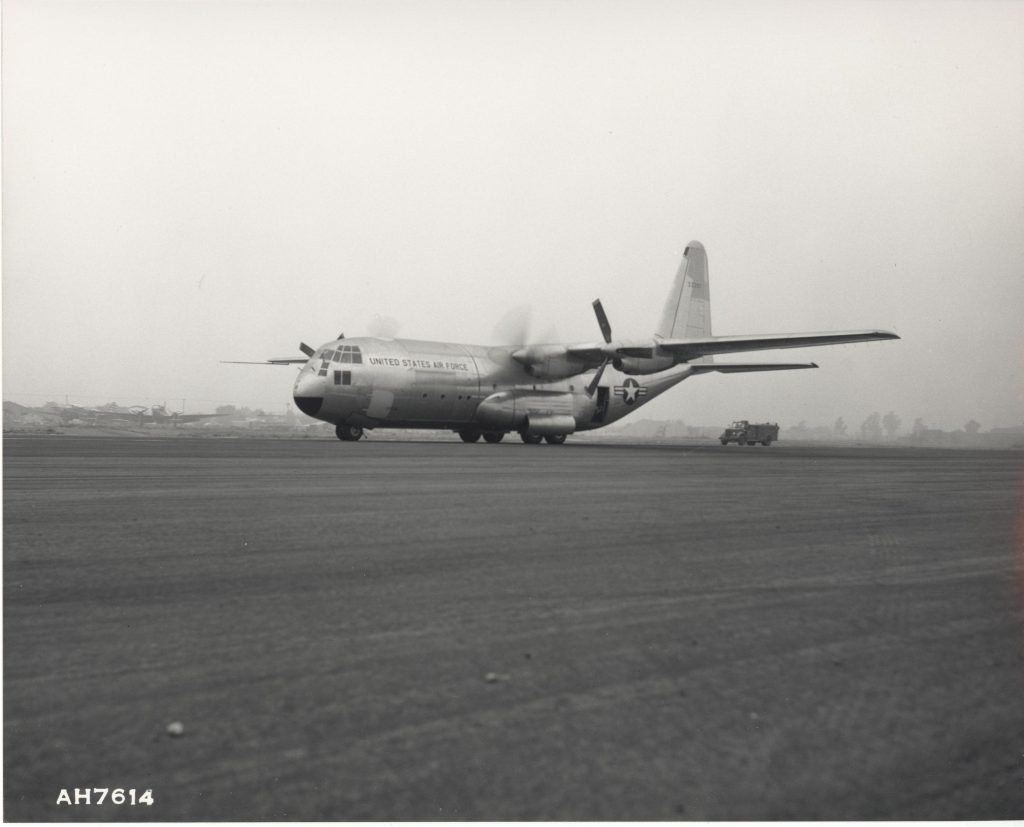
While the first flight took place in 1954, the C-130’s story began in 1951, when the Air Force requested a medium cargo airplane that could fill the void in between small and large transports, which had trouble landing on the short runways where troops were fighting during the Korean War.
“It was designed to be used in a tactical situation where there weren’t any nice, clean places to take care of it,” Lockheed engineer Willis Hawkins told the Smithsonian’s Air & Space Magazine in 2004.
The Air Force got what it asked for: a strong durable airframe, a giant tail that stabilizes the aircraft at slow speeds, propellers mounted high to keep the engines clear of dust and dirt, a narrow undercarriage flanked by sturdy tires to operate on and off roads, a tall, fully pressurized cargo compartment set low to the ground to allow for a wide range of cargo, and a built-in auxiliary power unit that lets the aircraft start up “when the nearest ground power cart is 150 miles away,” HistoryNet wrote in 2017.
All this, and the C-130 was surprisingly maneuverable: there was even a four-ship C-130 aerial demonstration team called the Four Horsemen in the late 1950s.
The Hercules proved its worth in the Vietnam War, where it delivered hundreds of paratroopers during Operation Junction City in 1967; landed or air-dropped off much of the supplies for the besieged Marines at Khe Sanh in 1968; and picked up new roles as aerial refueling tankers for rescue helicopters, land-anywhere taxis for special operations troops, and side-firing gunships for close air support.
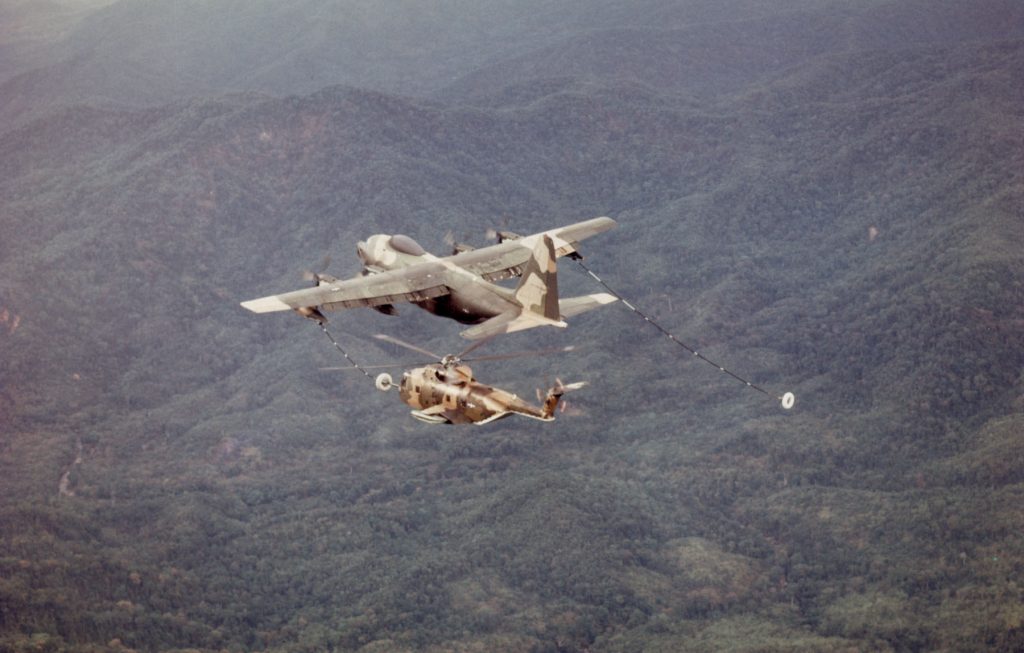
The Hercules truly lived up to its namesake during the fall of Saigon where, on April 29, 1975, a single C-130 flown by South Vietnamese Air Force pilot carried 452 refugees to Thailand, 32 of them in the cockpit alone.
“The aircraft was overloaded by at least 10,000 pounds and required every foot of runway to become airborne, including hitting the brakes while taxiing in order to close the rear ramp doors,” the U.S. Air Force wrote about the flight.
Do Anything, Anywhere
The C-130’s flexibility is one of its defining features. From 1960 to 1986, Air Force C-130 crews snagged capsules filled with spy satellite film as they dangled from parachutes over the Pacific Ocean. During Desert Shield and Desert Storm, EC-130 Command Solos broadcast radio programs meant to convince Iraqi troops to surrender, while Compass Call variants could disrupt enemy communications, jam radar, and help suppress enemy air defenses. In 1963, a C-130 became the largest, heaviest airplane to ever land and take off from an aircraft carrier.
It seems the Herc can’t stop taking on new jobs: in 2021, a C-130 acted as a drone carrier by snatching an unmanned aircraft out of the air. A year later, an MC-130J Commando II performed the first live-fire of a pallet-dropped cruise missile.
But the C-130’s peacetime portfolio is even more expansive. The Herc has dropped hay to stranded cattle in Colorado. Every summer, Air Force C-130 crews perform some of the most dangerous flying outside of combat when they drop fire retardant to stop wildfires across the western U.S. Meanwhile, the Ohio-based 910th Airlift Wing is equipped with large-area aerial spray units that kill the mosquitoes and filth flies that hatch in the standing flood water left over by large hurricanes.
Since 1965, C-130s have also served as the aircraft of choice for the “Hurricane Hunters” of the 53rd Weather Reconnaissance Squadron, who fly into storms and atmospheric rivers to collect data for scientists and emergency officials back home.
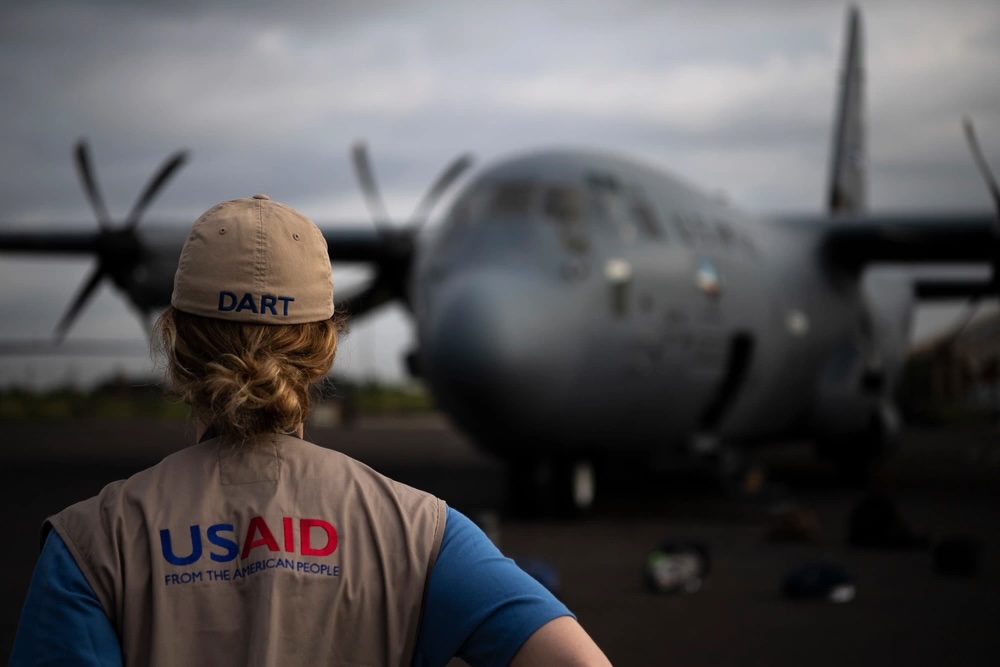
Outside of those technical roles, the Herc has saved thousands of lives just by dropping off food and medical supplies nearly anywhere on Earth, including southern Sudan during the Darfur Conflict, where the aircraft played a pivotal role with the United Nations World Food Program.
“We fly 10 hours a day, first light to last light,” Jaco Klopper, former chief of air operations for the WFP in southern Sudan, told the Smithsonian in 2004. “We refuel the airplane as it’s being reloaded. Turnaround time is about 15 to 20 minutes. If it wasn’t for the C-130s, a large number of people would have died.”
Always Improving
Part of what allows the C-130 to keep taking on new roles is that the aircraft itself is constantly changing. The analog, smooth-nosed YC-130 took off with just three blades on its propellers and engines that were more like blow-dryers compared to those of today’s C-130Js, which also feature six-bladed propellors and a glass cockpit.
“Internally, little remains of the airplane’s 1950s heritage,” the Smithsonian wrote. “But two things never changed: Riding in the cargo hold of a C-130 is still a class below steerage, and, from the first A model to today’s spanking new J, from the first hour of flight to the 20 millionth, the airplane has been fun to fly.”
Kennedy shared that opinion of the aircraft.
“I was always proud to maneuver the beautiful beast around the Americas, Europe, Africa, and the Middle East, landing in the Moroccan desert, a former-World War II open field in southern England, and the limestone short runways in southern Colombia, or dropping the most lethal forces known in mankind,” he said. “Cheers to seven decades of service to the workhorse of the air.”
Kennedy’s fellow Herc driver, Gen. Mike Minihan, the outgoing head of Air Mobility Command, called it “the greatest airplane ever built.” Still, Minihan told Air & Space Forces Magazine, it would be nothing without the people who fly, fix, and support it.
“It is blue-collar work. There is nothing majestic or outwardly appealing to it until you’ve been a part of that family,” he explained, holding back tears. “Then it is the most majestic and appealing thing in the world. That airplane has an ability to bring the best out of America and Americans.”
The general said he was heartbroken that his days flying the C-130 are over, but he was ecstatic for an airplane “that’s been made brand new for 70 years and will continue to be made in the foreseeable future.
“I’m happy that we not only get to celebrate that airframe, but more importantly, I’m happy that we get to celebrate the people that fly, fix and support it.”
